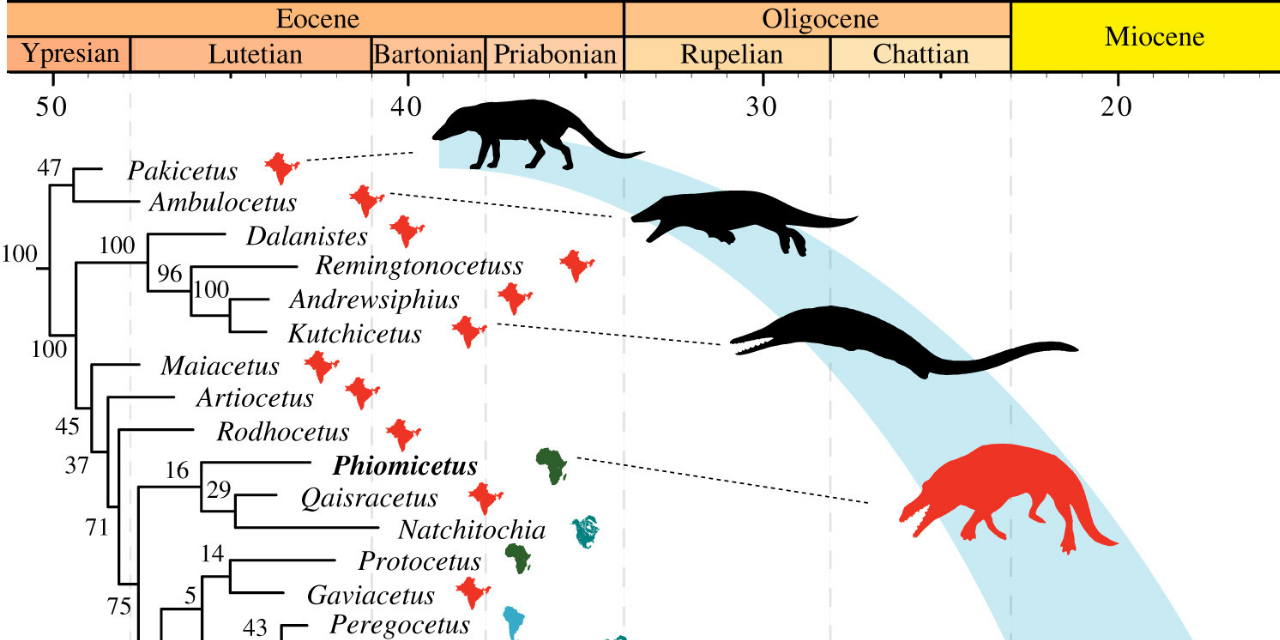Science news was all abuzz recently about a report of a fossil discovery in Egypt. Here’s a sampling of the headlines:
- Phys.org: “Analysis of new species of ancient four-legged whale published”
- NPR: “Scientists Discover Fossil Of A 4-Legged Whale With A Raptor-Like Eating Style”
- Newsweek: “What Is Phiomicetus Anubis? Fearsome Ancient Whale With Four Legs Discovered”
Notice the emphasis on the four-legged whale. A four-legged whale! That is indeed newsworthy, right? Curiously, the title of the technical paper (“A new protocetid whale offers clues to biogeography and feeding ecology in early cetacean evolution”) was less of an attention-grabber and did not mention anything about legs. So, what was up with that?
My Salvo magazine colleague and fellow science writer Casey Luskin read and commented on the report itself, which prompted me to go and do likewise. The report isn’t long, though it does contain a good bit of sciencey terminology. I sifted through it, and in simple terms, here’s the story behind the story:
- A “partial skeleton,” believed to be the remains of a whale, was found.
- The pieces that were found consist of the following: a cranium, jawbones, a few neck and chest vertebrae, rib fragments, and some teeth.
- The scientists who analyzed the find decided it represents the remains of a heretofore unknown species, so they defined a new species and named it Phiomicetus Anubis. “Anubis” was taken from the jackal-like Egyptian god.
On page three of the seven-page report, you can see a drawing of the animal as they envision it, with the recovered fossil pieces shaded red. With or without the drawing, do you notice anything curious about all this? No leg bones were found! Not four. Not two. Not even one. Yet the depiction of the animal in the report includes four fin-like legs. This probably explains why the journalists reporting the find zeroed in on the legs.
But it doesn’t explain why the legs were a part of the report in the first place. Why would a body of scientists announce they’ve discovered the remains of a whale and depict it as a four-legged creature when no legs were found? To answer that question, we must turn to the assumptions built into evolutionary science. Charles Darwin first published his theory of evolution by natural selection in 1859. Critics raised questions from the beginning, but the idea gained acceptance, and as it gained sway, it imposed onto all scientific analyses a certain vision of the prior development of life on earth.
One tenet of that narrative said that whales are descended from land-dwelling, four-footed mammals, and page four of the report features a colorful, detailed chart depicting the assumed evolutionary pathway by which they transitioned from land-dwellers with feet to sea-goers with fins. Keep in mind, though, that this evolutionary “path” was sketched out because the evolutionary narrative said it happened that way, not because the fossil record supplied evidence that it happened that way.
And so, here’s what has apparently happened. After analyzing the fossil based on its geographical location, estimated age, and other traits, the paleontologists examining it assigned it to a place on the evolutionary pathway, and that place just happened to be the place at which whales are believed to have possessed (guess what?) legs. It wasn’t the fossil evidence that said the whale had legs; it was the assumed evolutionary pathway. In other words, prior acceptance of the evolutionary narrative is what put legs on Mr. Phiomicetus anubis, never mind the fact that that there was no evidence he actually had legs.
The point of all this is not to knock science. Science is a wonderful enterprise that has advanced human knowledge and enabled us to develop human potential. The point is this: science is also a human endeavor, and scientists and science journalists interpret findings according to what they already believe is true about the world. In general, mainstream science interprets everything as if the Darwinian paradigm is truth (or Truth), and we do well to keep this in mind when we see and hear its proclamations.
An old saying says the devil is in the details, but in this case, it was the truth that was in the details. And it had to be sleuthed out of the details in spite of the eye-grabbing headlines. In any event, if the truth about the world is that God created everything, regardless of how he created it all, we can be confident that good investigation will bear that out. The truth about the fantastical four-legged whale is this: it was not the result of an unbiased examination of evidence but was rather a tale spun by the spinners of the paradigm.






